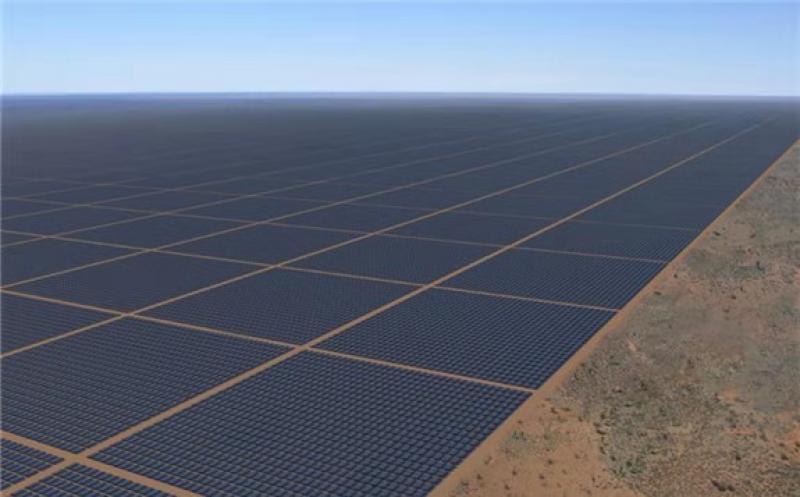Sun Cable’s mega project is set to get even larger with the consortium behind the proposed Australia-ASEAN Power Link (AAPL) – which would export solar energy from Australia’s Outback to Singapore via a submarine transmission link – announcing it will produce much more electricity than originally planned.

Sun Cable chief executive David Griffin said on Wednesday that improvements in solar PV technology meant the proposed solar farm will be significantly larger than the 14 GW originally planned.
“It will certainly be a material uplift from that,” Griffin told the ABC. “We’re still refining that precise figure but we’ll have more to say about that at the end of September.”
The proposed AAPL already includes a 14 GW solar farm featuring the prefabricated, pre-wired Maverick solar PV system designed by Sydney-based manufacturer 5B. The renewable energy generation will be coupled with an estimated 33 GWh of battery storage.
The project, being developed on a 12,000-hectare site at Powell Creek in the Barkly Region, is expected to supply power to Darwin and to Singapore via a 4,500-kilometre high-voltage direct-current (HVDC) transmission network, including a 750km overhead transmission line from the solar farm to Darwin and a 3,800km HVDC submarine cable from Darwin to Singapore. The project is expected to generate enough renewable electricity to power more than 3 million homes a year.
Griffin said the capacity increase had been driven by customer demand for more consistent renewable energy generation and improvements in solar PV technology.
“Our customers are wanting more electricity supplied on a flatter profile so more 24/7 rather than the traditional load profile,” he said. “The other factor is simply improvements in the technology.”
“Solar PV technology has come over an extraordinary journey over the last 30 years. Panel prices have fallen more than 99% over that timeframe so it sounds like a mature technology, but it actually has a huge amount of technological advancement to go. The roadmap for that is very clear. We understand what the industry is doing to further improve the efficiency of these solar panels and what timeframe that’s going to occur over. And those advances are pretty profound. It’s not a mature technology just yet, it’s got a lot of improvements to come so we’re just taking account of those future enhancements,” he also explained.
Griffin said the expected increase in renewable energy generation will be mirrored with an increase in battery energy storage capacity.
“There’s a marginal increase in the scale of the battery as well but again, a lot of that is reflected in increased efficiencies within the battery technology between now and when the project is built,” he said. “So once again, there’s no visible change to the system it’s just that it’s operating more efficiently.”
While the capacity increase is not expected to alter the physical scale of the project, Sun Cable has changed the location of where its under-sea cable will land, shifting it from Middle Arm in Darwin to Murrumujuk Beach at Gunn Point, about 60 kilometers northwest of the city.
“We had been intending to base our voltage source converters in Middle Arm,” Griffin said. “We were going to supply the Darwin Katherine Integrated System (DKIS) with 800 MW of capacity and then transition to submarine cables through Darwin Harbour and off to Singapore. But Darwin Harbour is getting pretty crowded with prospective projects and infrastructure that are there already and we didn’t need to compete against conflicting uses when there was perfectly viable alternatives elsewhere so we’ve moved that portion of the system out to Murrumujuk. We’ll still supply the Darwin Katherine Integrated System from up there and the submarine cables will transition from there into the sea and directly off to Singapore and avoid the Darwin Harbour area.”
Sun Cable said the AAPL will be capable of supplying up to 20% of Singapore’s total electricity needs, with supply commencing in 2027.
Griffin said the company is still “some time away from kicking off any physical construction” on site but work on the project is progressing with baseline analysis and geotechnical studies continuing.
Actual construction is expected to begin in early 2024 with the first power to be supplied to Darwin in 2026.